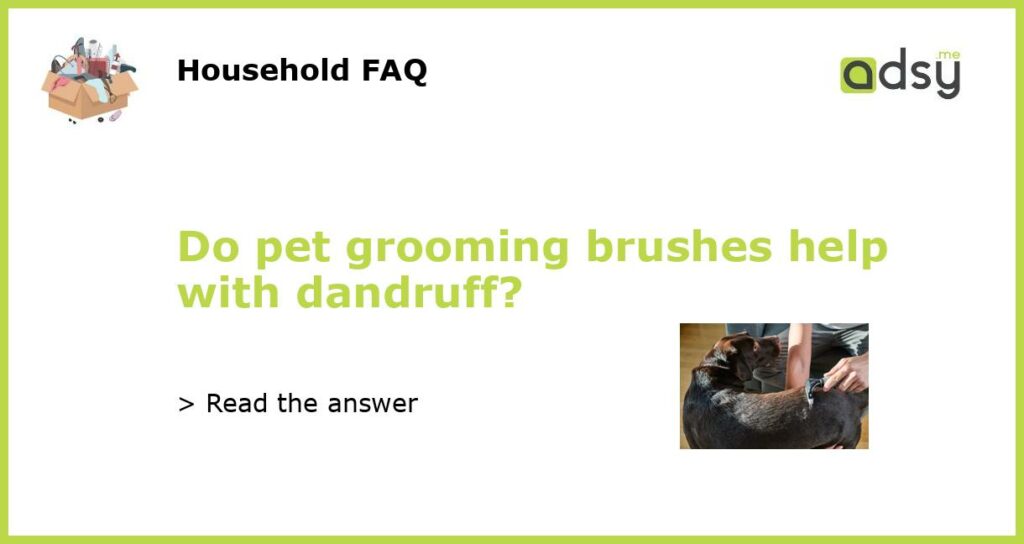Understanding the Relationship Between Pet Grooming Brushes and Dandruff
Many pet owners have probably wondered if using grooming brushes can help with their pet’s dandruff problem. Dandruff is a common issue among pets, just like humans. Whether it’s cats or dogs, dandruff can be a frustrating condition to deal with. Fortunately, there are tools available, such as pet grooming brushes, that can help alleviate dandruff in our beloved furry friends. In this article, we will explore how pet grooming brushes can help with dandruff and the best practices for using them.
How Pet Grooming Brushes Can Help with Dandruff
Pet grooming brushes can be an effective tool for managing dandruff in pets. Regular brushing helps to remove dead skin cells and loose hair from the pet’s coat, which can contribute to dandruff. By removing these dead cells, the likelihood of dandruff flakes appearing on your pet’s fur is reduced.
Additionally, when you brush your pet’s coat, you stimulate the production of natural oils in their skin. These natural oils are essential for maintaining a healthy coat and skin. By distributing these oils evenly through brushing, you can prevent dryness and flakiness, which are often the main triggers for dandruff.
Best Practices for Using Pet Grooming Brushes for Dandruff
When using pet grooming brushes to help with dandruff, it’s essential to keep a few best practices in mind:
- Choose the right brush: There are various types of pet grooming brushes available, each designed for different coat types. Selecting the right brush for your pet’s coat will ensure that you effectively remove dead skin cells and loose hair without causing any discomfort or irritation.
- Brush regularly: Regular brushing is key to managing dandruff. The frequency of brushing will depend on your pet’s breed and coat length. Generally, cats with shorter coats may require brushing once or twice a week, while dogs with longer coats may need brushing several times a week.
- Be gentle: When brushing your pet, be gentle and avoid applying excessive pressure. Rough brushing can cause skin irritation and further contribute to dandruff. Use slow and deliberate strokes to remove dead skin cells and minimize the risk of dandruff.
- Brush in the direction of hair growth: Brushing in the direction of your pet’s hair growth ensures that you remove dead skin cells effectively without causing any discomfort. It also helps to distribute natural oils evenly throughout the coat.
- Supplement with appropriate grooming products: In addition to brushing, it may be beneficial to use appropriate grooming products designed to reduce dandruff in pets. Consult with your veterinarian to find the right shampoo or conditioner that can help manage dandruff and support your pet’s skin health.
The Importance of Regular Veterinary Check-ups
While pet grooming brushes can be helpful in managing dandruff, it’s important to note that dandruff can also be indicative of underlying health issues. Regular veterinary check-ups are crucial to identify and address any potential health concerns that may be causing or exacerbating dandruff.
A veterinarian can assess your pet’s overall health and provide guidance on the best practices for managing dandruff. They may recommend specific grooming techniques or prescribe medicated shampoos or treatments to address the underlying cause of the dandruff.
Pet grooming brushes can indeed help with dandruff by removing dead skin cells, distributing natural oils, and promoting overall skin and coat health. However, it is important to choose the right brush, brush regularly, be gentle, brush in the direction of hair growth, and supplement with appropriate grooming products. Remember, regular veterinary check-ups are essential to address any underlying health issues that may be contributing to dandruff. By following these best practices and consulting with your veterinarian, you can effectively manage dandruff in your beloved pets and help them maintain healthy and dandruff-free coats.






